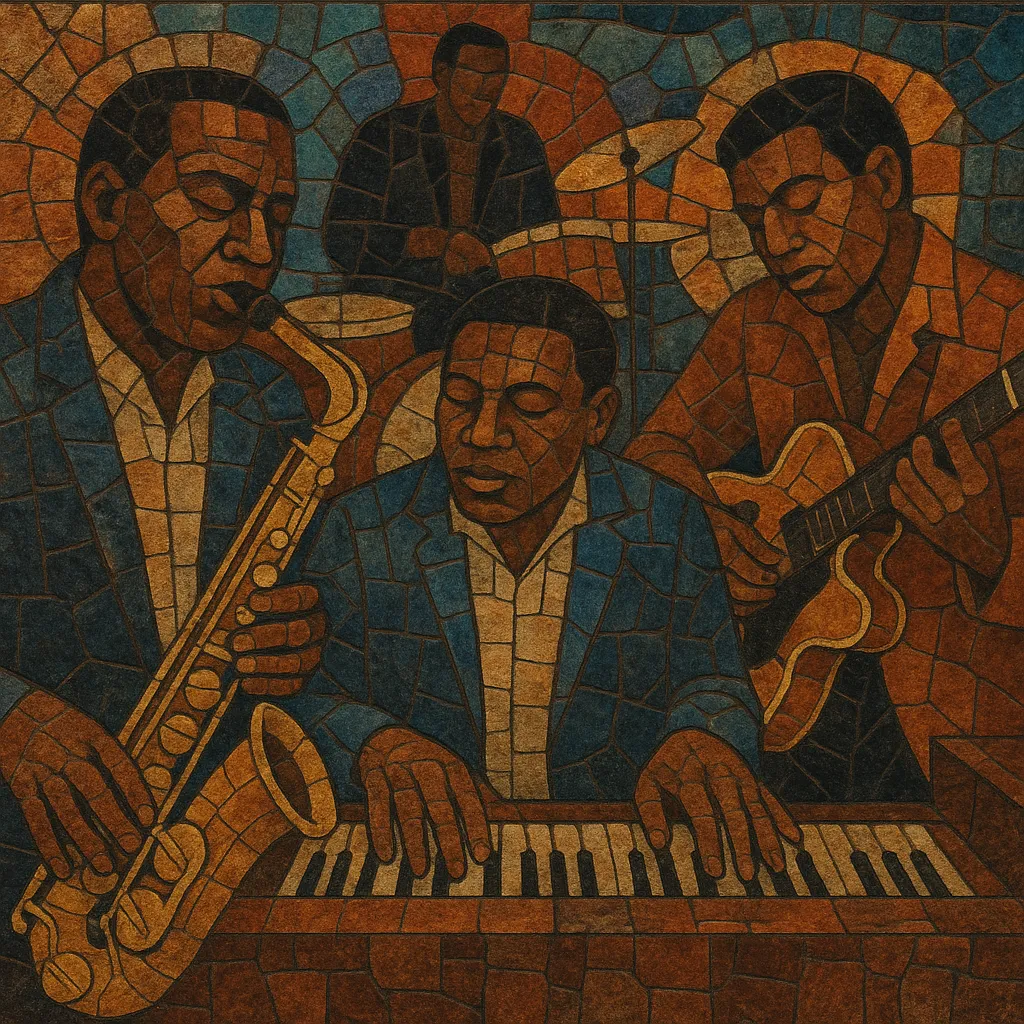Soul jazz is a groove-forward branch of jazz that blends the improvisational language of hard bop with the churchy harmonies of gospel and the backbeat of rhythm & blues. It favors memorable riffs, earthy tones, and a strong, danceable pulse over dense harmonic complexity.
Typical settings include Hammond B-3 organ trios (organ, guitar, drums) or small combos with saxophone or trumpet. Tunes often use blues forms, minor-key vamps, and gospel cadences, featuring call-and-response figures, pentatonic and blues-scale lines, and a relaxed but insistent pocket. The overall aesthetic is warm, direct, and soulful—equally at home in jazz clubs, lounges, and on the radio.
Soul jazz emerged in the United States in the late 1950s as hard bop players increasingly drew on gospel, blues, and rhythm & blues. Organists such as Jimmy Smith popularized the Hammond B-3 in small-club settings, establishing the organ trio as a definitive format. The music emphasized singable melodies, blues forms, and grooves that audiences could feel and dance to.
Throughout the 1960s, labels like Blue Note and Prestige documented a wave of soul-jazz recordings. Cannonball Adderley’s band (with Joe Zawinul) brought church-inflected melodies to radio with hits like "Mercy, Mercy, Mercy." Trumpeter Lee Morgan’s "The Sidewinder" paired a soulful vamp with hard bop horn writing, while saxophonists Lou Donaldson and Stanley Turrentine, guitarist Grant Green, and organists Brother Jack McDuff and Jimmy McGriff shaped the idiom’s signature sound. The era also intersected with the boogaloo craze, fusing R&B backbeats and Latin-tinged rhythms with jazz phrasing.
In the early 1970s, soul jazz overlapped with the rise of jazz-funk and smoother production aesthetics (e.g., CTI Records). The organ’s popularity waned in mainstream jazz as fusion took center stage, but many soul-jazz artists adapted, incorporating electric bass, backbeat-heavy drums, and funkier vamps while retaining blues-and-gospel phrasing.
From the 1980s onward, rare groove DJs, acid jazz bands, and hip hop producers rediscovered soul-jazz records for their fat drum breaks, basslines, and organ riffs. Reissue campaigns reintroduced classic Blue Note and Prestige sessions to new generations. Today, soul jazz endures as a club-friendly, listener-friendly strand of jazz whose influence runs through jazz-funk, acid jazz, smooth jazz, and sample-based hip hop.


